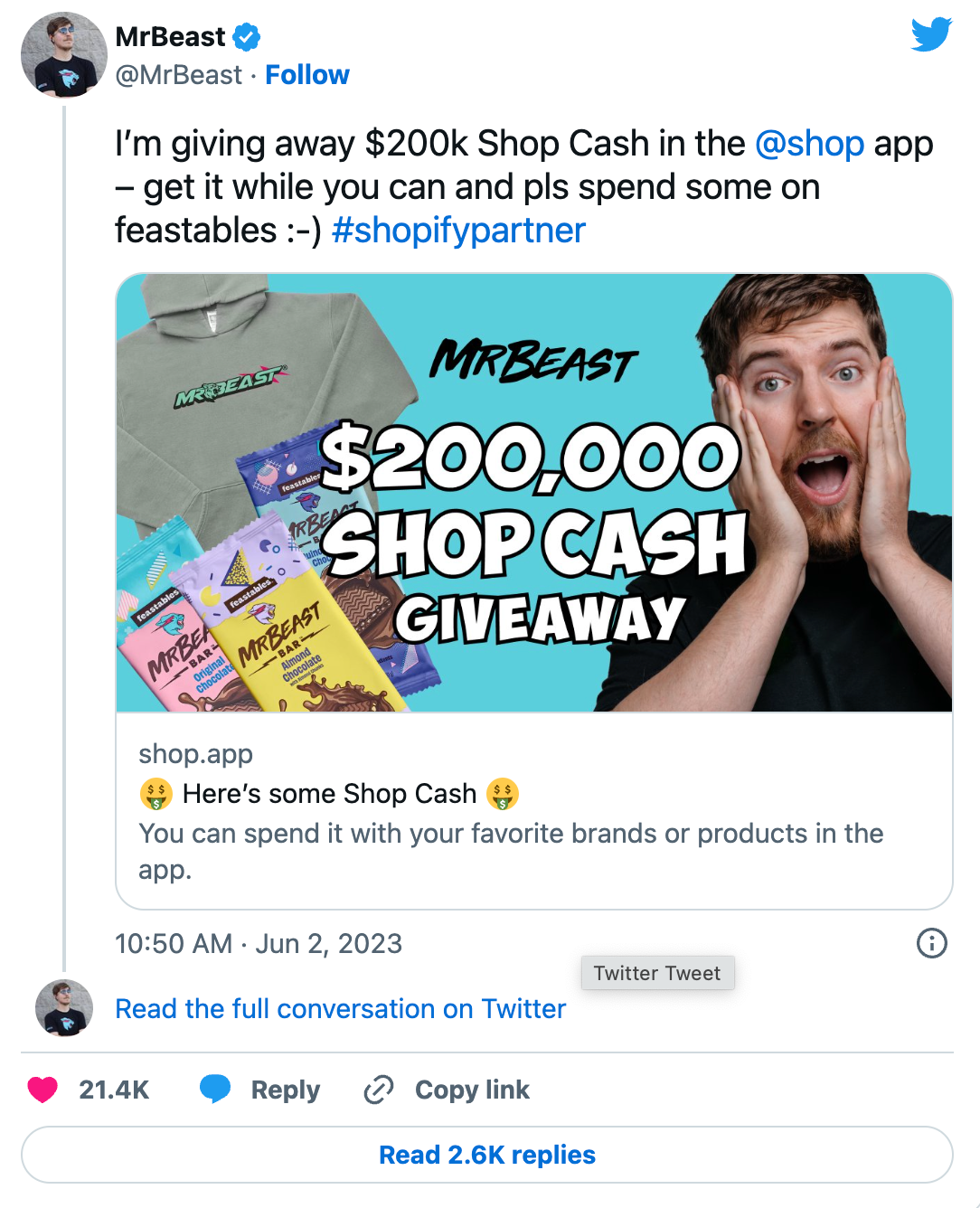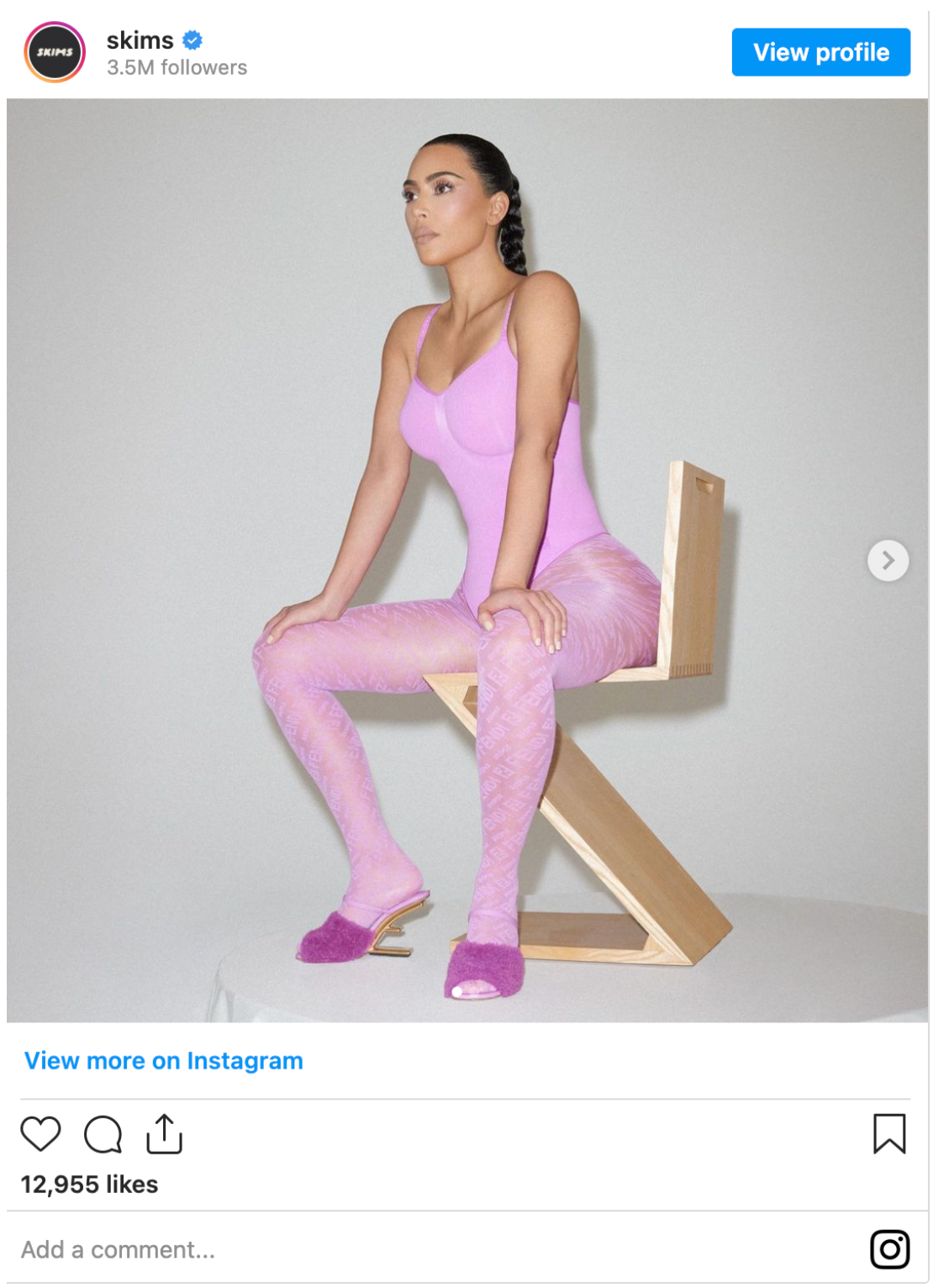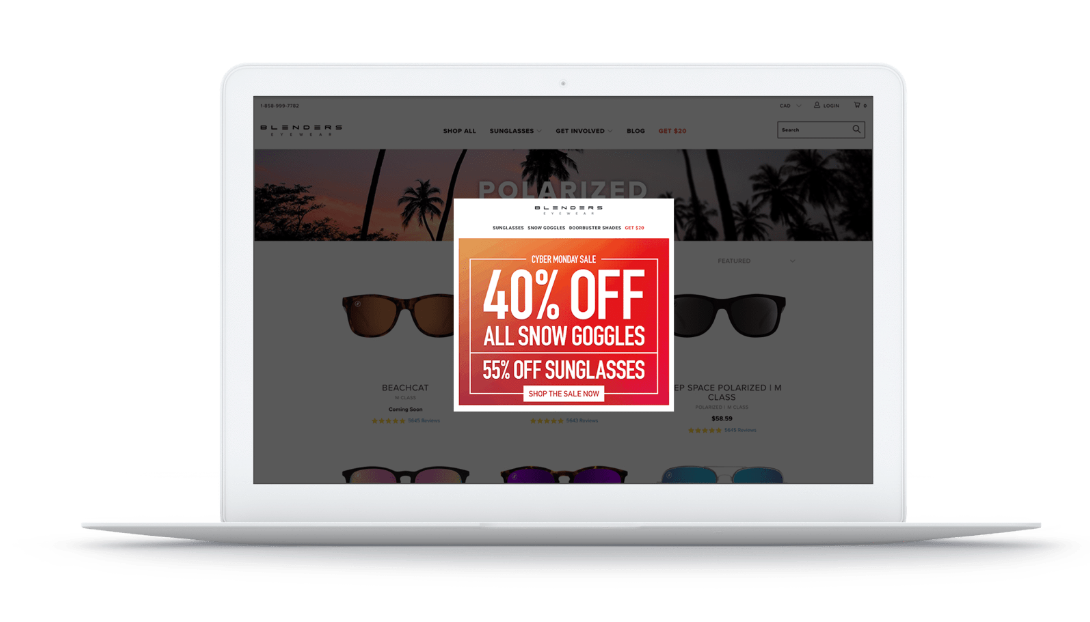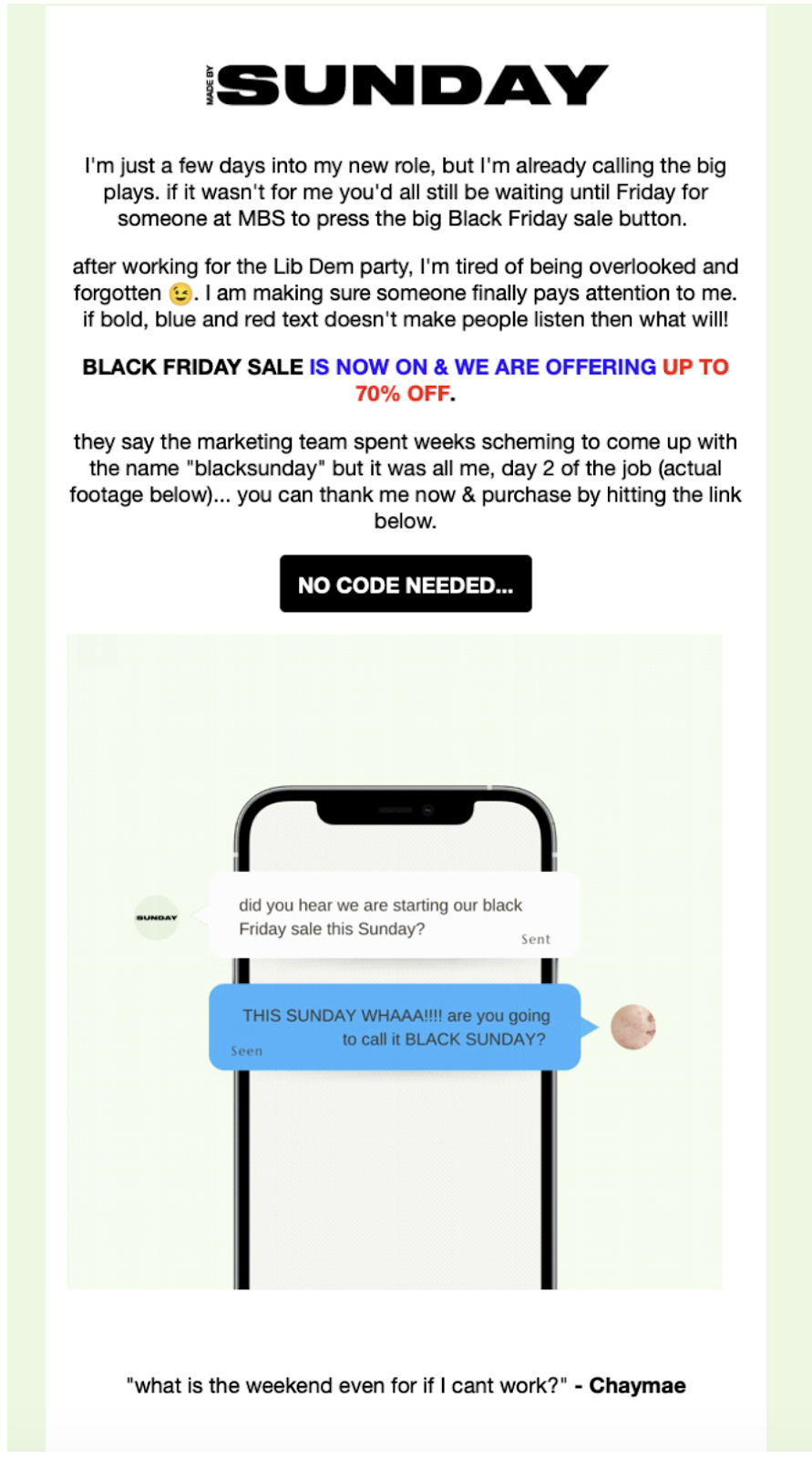It’s boom or bust in a very brief sales window.
Whether your brand is dropping an exclusive new product or running a promotion during one of the year’s biggest shopping events, like Black Friday Cyber Monday (BFCM), many of these transactions will happen in flash sales.
Online sales over the BFCM period topped $9.3 billion on the Shopify platform in 2023—a 24% increase from 2022. Known as the “golden hours of retail,” people take advantage of flash sales because of FOMO (fear of missing out) on last-minute deals.
Ahead, learn the basics of a flash sale, why they fail, and how to run one for your ecommerce store.
What is a flash sale?
A flash sale is a discount or promotion offered for a limited period of time. It allows merchants to sell a vast number of products at a large discount.
Flash sales require some preparation if you’re expecting a big increase in your checkouts. The exclusivity and urgency tap into shoppers’ FOMO, which encourages impulse buying.
Flash sales have one drawback, however. They can erode margins and attract bargain hunters with no intention of becoming loyal customers. In a worst-case scenario, failing to deliver on inventory, fulfillment, and shipping promises can destroy your reputation.
But the best-case scenario is well worth the effort. Offering steep discounts for a brief period of time can help grow your bottom line, increase customer lifetime value (CLTV), and earn loyalty you otherwise might not have.
Are flash sales worth it?
Flash sales provide excellent opportunities to sell a large amount of products in a short period of time. In some cases, you can expect thousands of shoppers to check out in a few minutes. When considering a flash sale, you’ll need to know if it’s right for your ecommerce business.
A successful flash sale leads to:
-
More space for inventory. Flash sales help you get rid of excess inventory, like out-of-season products or dead stock. They help lower inventory and operating costs. Plus, if products have been collecting dust in a warehouse, you can move them out and make room for new, in-demand products.
-
FOMO that drives sales. Shoppers don’t like to feel they’re missing out on something. By running a flash sale, you can encourage potential customers that have been waiting for the right price point.
-
Increased loyalty. Flash sales create affinity between you and customers. It’s also a great way to reward loyal ones. The more customers love you, the more likely they buy from you in the future.
Cons:
-
Lower margins. A flash sale discount can be anywhere from 50% to 70% off normal retail prices. If you’re operating on thinner margins, you may not see much profit per item.
-
Attracts bad customers. Flash sales often appeal to one-time buyers. They take advantage of the deal, then never shop with you again.
Damages your reputation. Some companies do an inadequate job of managing flash sales, which risks their reputation. People also get “flash sale fatigue” if you run frequent flash sales and can experience diminishing returns.
How to run flash sale
Now that you’ve seen successful examples of flash sales, let’s look at how to run one for your brand:
-
Decide on the purpose of your sale
-
Choose the right flash sale products
-
Keep the time period short
-
Promote your sale early
-
Check inventory
-
Prepare for shipping
1. Decide on the purpose of your sale
First you need to set the foundation for your flash sale strategy. Are you looking to clear out excess inventory, or do you want to create product awareness during the holiday season? Or both?
Get specific about what your goals are. You may hope to:
-
Make room for new in-demand products
-
Increase customer loyalty
-
Create FOMO for a product launch
-
Take advantage of a hyped shopping holiday like BFCM
-
Attract new customers
For example, if one of your primary goals is to get rid of an out-of-season line, how will your flash sale accomplish that? Will you place a widget on your site so people know about it right away? Will you apply a code at checkout? Are you planning to run retargeting ads for online shoppers who bounce?
2. Choose the right flash sale products
You may decide to hold a flash deal on your marquee product and be done with it in two to three hours, without giving it much thought. This might work well and be the only option for an ecommerce company with a skinny catalog of SKUs.
However, if you’re a retailer with thousands of items—many of which aren’t moving as fast as you’d like—how do you identify the ones that might work best in a flash deal?
-
Identify poor or negative product reviews left by customers of your competitors and poach them with a clever sale ad.
-
Leverage keyword tools like SEMRush and Clearscope to identify which items your competitors are focusing on and undercut them.
If your flash sale is to attract new customers:
-
Flash-sell excess high-margin seasonal inventory to move it quickly and reduce accounting costs.
-
Start a relationship or poach a competitor’s customer by flash-selling popular, low-margin merchandise.
-
Hold a “secret” and ongoing sale for new customers, promoted through your confirmation email.
If your flash sale is aimed at existing customers:
-
Select items based on high traffic or low purchase volumes.
-
Flash-sell items only to segments that have expressed some interest in them in the past (visited product page, clicked on an ad, etc.).
-
Hold a “secret” and ongoing sale for existing customers, promoted through abandoned-cart emails.
3. Keep the time period short
Brick-and-mortar stores have taught us people will forgo sleep, line up before dawn, and behave in ways they otherwise might not for a great deal. But this doesn’t mean you need to “open the doors” at 4 a.m.
So, when should you run a flash sale?
Greg Merrell of Simplistic who has worked with mega-retailers like Fashion Nova and creates one-off flash deal sites to accompany major-media appearances on venues like Good Morning America, Shark Tank, and Ellen, says, “Sorry to disappoint, but we don’t recommend any ‘best practice’ timetables for scheduling a flash sale, just as there are no best-practice timetables for advertising. The schedule is going to depend on your product and target customer.”
That means, look at your analytics and see if any purchasing patterns emerge:
-
What day(s) of the week do people historically purchase?
-
What time of day do people historically purchase?
-
When are your email open rates highest?
The shorter the sale, the better. A short sale creates a sense of urgency and motivates people to act immediately. Most flash sales last between two and 36 hours.
4. Promote your sale early
A carefully planned launch can improve your flash sale’s success. The earlier you promote it, the more you’ll keep people interested and on the lookout for your event.
Promoting your sale early also helps build traction for it. You can grow an SMS and email list, then create countdown messages leading up to the sale. Or publish a series of social media posts to improve your reach and sales visibility.
“It’s crucial to make the sale worth all of the buzz,” says Katie-Jay Simmons, retail expert for Fit Small Business. “Offer deep discounts and rare savings during flash sales to stay competitive and promote word-of-mouth marketing. There are a number of blogs, sites, and popular social media accounts that keep track of worthy flash sales—so make it your goal to be featured.”
5. Check inventory
Most flash sale items sell out faster than anticipated. Think about how a customer would feel after seeing your marketing, only to find out the item they want is out of stock. They’d likely be disappointed. You don’t want to run out of flash sale items too early.
Work with a third-party logistics (3PL) company that offers inventory management tools to maintain stock levels on the day of the sale. A logistics company like ShipBob offers visibility into your inventory levels in real time. It helps you track available stock in its fulfillment centers and will notify you when inventory is low or you need to re-order. It’s an easy way to set your flash sale up for success.
Learn more: 3PL (Third-Party Logistics): How to Select the Right Ecommerce Fulfillment Partner
6. Prepare for shipping
Prepare your shipping and fulfillment strategy to meet the increased demand of a flash sale. Notify your fulfillment partners about the sale so they expect a large influx of orders during the time period. A reliable 3PL can ensure your customers receive items fast and have a great experience from beginning to end, turning them into loyal customers for the future.
Flash sale examples
MrBeast
MrBeast is an excellent example of running flash sales. He took part in Shopify's Shop Day event, which celebrated the official launch of Shop Cash in the US last June 2. For this event, Shopify partnered with various merchants, including MrBeast, to give away more than $1,000,000 in Shop Cash.

Shopify's Shop app, which hosted major flash sales from high-profile figures like MrBeast, marked a significant milestone with the rollout of Shop Cash. This flash sale is indicative of how Shop has become a key commerce platform for both major internet creators like MrBeast and independent retailers just starting out.
Innovative marketing tactics like these are the backbone of MrBeast’s growing enterprise. When launching Feastables, his line of chocolate bars, he decided to make the audience part of the sales experience.
To generate excitement and engagement, he announced that those who bought Feastables chocolate bars would have the chance to win significant prizes, including Teslas, Seadoos, and a lifetime supply of chocolate.
In an even more immersive move, MrBeast invited ten lucky winners to compete at his own chocolate factory (a replica of Willy Wonka’s whimsical chocolate factory from the famous children's book and film). The entire event was filmed for his YouTube channel, where MrBeast, dressed as Willy Wonka, guided the participants through various Feastables-themed challenges.
The flash sale and the associated events were a success, significantly contributing to the brand's rapid growth. By May 2022, less than a year after its launch, Feastables had already made over $10 million in sales.

Fendi X SKIMS
Kim Kardashian’s Fendi X SKIMS collaboration made over $1 million in one minute during its first drop. SKIMS launched in 2019, and as of 2022, it’s already worth more than $3 billion.

SKIMS has a cult following that sells out drops weekly. The brand releases a limited number of products per drop to create FOMO in buyers—and it works. Some of the collection’s most expensive pieces, like Kim’s favorite leather midi-dress, sold out in mere seconds. According to TMZ, the Fendi launch is on track to become the most successful in SKIMS’ short history.
Blenders
Blenders, a popular eyewear brand selling polarized shades and ski goggles, is a flash sale leader leveraging the power of automation to 10 times sales by instantly switching between flash sales.
Blenders used Shopify’s Launchpad to execute two separate site designs: one for its Black Friday flash sale, and another for its new promotion on Cyber Monday:

“When things go live at midnight, you don’t want to have to stay up till midnight to do all these changes,” Blenders CEO Chase Fisher says. “We had our offers switched to go out through Launchpad. We had our themes switched to go out through Launchpad. They pushed everything through successfully.”
MadebySUNDAY
MadebySUNDAY is a natural skin care product retailer based in Oxfordshire, UK. The brand researches, formulates, and manufactures its own in-demand skin care products. CEO and founder Chaymae Samir uses flash sales to increase customer lifetime value and earn loyal customers.
Chaymae recalls running a flash sale that resulted in an 890% increase in revenue and a 195% increase in website conversion rate.

She explains that the great results came from a mix of “social media marketing, push notifications, SMS, and email marketing.” The brand promoted the online sale ahead of time, publishing tailored, organic content for its audience.
“Flash sales only work if your customers are not used to you discounting your product or service regularly,” Chaymae explains. “There’s no incentive to buy if they expect another sale next week.” MadebySUNDAY opened the flash sale to a select group of customers, with a password protected shopping portal, to create a VIP experience.
“Loyal customers were given first pick at the inventory. Chayme says that curating the experience for high spenders encourages other shoppers to spend more with the brand to avoid missing out on items.
Don’t be afraid of going out of stock! It creates scarcity, so next time you’re running a flash sale, people actually listen and buy,” Chaymae adds.
Reasons why flash sales fail
Now that you know how to run a flash sale, let’s look at why some fail and how that can be avoided.
Shipping fail
It’s not uncommon for flash deal customers to complain of waiting several weeks to receive merchandise that arrives in multiple installments.
Customer perception is shaped not only before and during the sale but also by what happens after a purchase is made. Shipping flash-sale items quickly is paramount.
Make your flash deal stand out by offering free shipping. Not only can doing so help you differentiate your brand and better compete with Amazon, but free shipping can also increase your average order value (AOV).
Inventory fail
One way to really disappoint customers is to build excitement, use scarcity to drive them onsite, and then tell them the item they want is out of stock.
“We ensure we have plenty of stock before running flash sales,” says Brian Lim, founder and CEO of Emazing Group, a family of lifestyle and self-expression brands. “We have to plan these out months in advance. Another tip is to move these products closer to our packing stations before the sale date to increase efficiency in pick, pack, and ship.”
Alleviating inventory fail and the associated fallout comes by doing four things:
-
Researching demand and preparing your supply chain accordingly.
-
Being transparent about your inventory by adding inventory quantities to your product pages.
-
Being prepared to say, “I’m sorry,” and keeping in constant communication with buyers if you mess up.
-
Embracing scarcity as exclusivity and inviting visitors who arrive too late to get notified of your next sale via email or Facebook Messenger.
Gymshark’s Zeb Mills suggests inventory allocation is also crucial: “Another learning from years of practice is to make sure stock splits are fully optimized across stores. For us, this involves analysis and forecasting of sales in order to determine the percentage split of stock allocated to each store. We also ensure we have adequate buffer stock levels to protect from oversells.”
Site fail
Even for large brands, flash sales often result in routine site crashes. But if your business model heavily relies on flash sales, load testing your site is a must. The extra server capacity is likely cost-prohibitive during non-flash times.
The ability to scale on demand is necessary to prevent crashes. You can forecast peak transaction loads based on user behavior in response to email marketing, PPC campaigns, and social media traction.
Lastly, be sure your ecommerce platform and any apps or third-party tools that depend on API calls to function are likewise load tested.
A note on failure:
Not all of your flash sale experiments will succeed. What’s important is learning from each attempt and using those insights to run better experiments and sales. Gymshark’s Mills offers this advice: “At Gymshark we very much live by the philosophy of ‘fail fast, learn faster.’ One of our biggest learnings when it comes to executing flash sales is not to be overconfident and always have a plan A, B, and C for when things go wrong.
“An example of this for us is having a plan for when things go wrong—i.e., having customer communications already planned out and designed.”
Best practices for flash sales
Whether you’re running your first or fifth campaign, keep the following flash sale tips in mind:
-
Promote scarcity and value
-
Narrowly define your target audience
-
Offer free shipping
-
Differentiate your sale
-
Put your next sale on autopilot
Promote scarcity and value
No amount of marketing can save a flash sale, unless it combines great merchandise at a deep discount.
It’s why scarcity (quantity and sales length) is a foundation on which you’ll build your marketing mix. For example, consider a 24-hour flash sale or a summer flash sale, or even a recurring flash sale Friday.
Test to see if flash sale ads in the days leading up to a sale generate opt-ins that ensure you have direct last-minute access to prospects. But remember: It’s email that drives the most traffic. In fact, email sent within 24 hours of the start of a sale resulted in a 35% lift in transaction rates. But while it may be the most lucrative, email is just one of the levers you have to pull.
“I’ve seen these events spur rapid growth when held strategically,” says Katie-Jay Simmons of Fit Small Business. “Focus on the sense of urgency when promoting the sale. Embedding real-time countdowns in newsletters and site banners is a personal favorite tactic of mine.”
The key to determining which channel is likely to produce the best ROI for you is, as usual, hiding in the data:
-
Where do your prospects and customers spend their time?
-
What percentage of your marketing currently goes to those channels?
-
Which channels yield the highest click-through rates (CTRs) and conversions as well as lowest customer acquisition costs (CACs)?
-
Weight your spend according to where and how you’ve had past success selling the items.
“Really drive home the urgency of the sale using visual cues. Including countdown clocks in email blasts and directly on your site stresses how short the window of opportunity is and can leave you with fewer abandoned carts,” says Stephen Light, CMO and co-owner of mattress brand Nolah.
Narrowly define your target market
How you define your target market hinges on the goal you set for your flash sale:
-
Unload excess stock
-
Acquire customers
-
Grow top line
-
Lift profits
If the goal is to acquire new customers:
-
Don’t overtly market the sale to your existing email list.
-
Identify consumers who have shown interest in soon-to-be-sale products or who follow a competitor with similar products.
-
Poach these consumers by targeting competitors’ Facebook and Instagram audiences or targeting TikTok audiences.
-
Run limited-time Google Ads that are triggered only by the exact keywords associated with your sale products.
-
Ask PPC targets to opt into a separate VIP email list in return for early access or some other benefit to offset PPC costs.
If the goal is to increase profits from existing customers, target customers based on:
-
Prior interest in sales or specific products
-
Most or least valuable customer profiles
-
Inactive customers
Be sure to suppress the segment of your customer base that has already purchased the item you are massively discounting. They won’t be happy when they see their peers are getting the same item 70% off.
Afraid to niche down too much? Keep in mind that the wider you cast your net the lower your conversion rate is likely to be, the higher your CPC, and the lower your ROI.
Mini-flash sales are great ways to test how a larger sale will work—they aren’t characterized by extremely small audience sizes. Instead, they simply use a bit of data intended to narrow the net you cast to improve your KPIs. The more you narrow your target, the better shot you have at generating higher returns.
Offer free shipping
The word “free” can push people to buy your discounted items. Ninety percent of consumers view free shipping as an incentive to shop online more often.
Free shipping is a great incentive to take advantage of your flash sale. “A free shipping option can sway the consumer toward the buying decision,” says Jessica Kats, ecommerce and retail expert at Soxy.
“When implementing this strategy, highlight the duration for the deal. A countdown timer optimized for free shipping can create urgency for people to buy the product.”
Differentiate your flash sale
You can differentiate your sale in ways that make you stand out and help you predict demand.
Registration flashes
To better gauge demand and ensure you have the inventory and server capacity to withstand the deluge, consider asking people to register for the sale. It’s similar to a traditional auction where you have to provide contact information to receive a bidder’s card.
Not only will you get a ballpark idea of what peak load capacity may look like and how much inventory you may need, but you’ll also position yourself to reduce your PPC spend a bit, as you’ll be collecting email addresses for contact purposes as you get closer to the sale.
VIP or early bird flashes
Stimulate user imagination by promising a mystery item included in the sale for registered consumers like them. Or, promise a first look or sneak peek at the mystery item shortly before the sale.
This twist achieves many of the same goals registration does but adds a bit of mystery to the scarcity inherent in flash deals. Not only does it ask users to register but it creates a bit of intrigue by keeping secret some or all of the items to be included.
Once again, you’ll position yourself to better gauge demand. You’ll also create a reason for prospects to visit your site prior to the sale—people who otherwise might not have. This provides you rich data about which products users show the most interest in and can help you select which items you designate as mystery items. The data also provides you with retargeting opportunities long after your sale ends.
“As a brand, your job is to know your customer,” says Greg Merrell. “Leverage that expertise to provide them with a great offer on something they want at a time that’s appropriate to them. A good flash sale shouldn’t be an opportunity—or be perceived to be an opportunity—for you to offload old inventory that you need to liquidate. It should be a reward for your biggest fans and close followers first and foremost. They’re your evangelists, and their word of mouth will do a lot to drive additional sales.”
Put your upcoming flash sale on autopilot
Flash deal leaders often automate their events to save time and money. This makes sense since pre-sale to-do lists are lengthy and can include:
-
Unhiding products
-
Navigation changes
-
Landing page updates
-
Uploading hero images
-
Collection page alterations
-
Publishing a new homepage
Manually preparing your site, or building a new one just for the sale, is a time- consuming and laborious process that drains resources that could be better spent experimenting for growth or focusing on higher-value ROI-generating tasks.
It’s why many brands using Shopify automate their sales with Launchpad, which, as mentioned above, allows you to easily schedule the components of your sale in advance, coordinate, and automatically execute everything related to your flash sale. Launchpad also allows brands to roll back all of the changes immediately after the sale and restore their traditional online storefront with just a click of a button.
Run your own flash sale today
Flash sales will increasingly help brands forge bonds with customers that can’t be had through other means. The notification and execution happen in real time. The anticipation drives people to show up in droves at a specific time and place. The sale arouses an emotional response and provides a visceral customer experience no competitor can fully replicate.
Next-generation flash sales will build on this foundation, and we are working toward making sales fairer, with bot mitigation technology that prevents bots from rapidly purchasing the majority of sale inventory. We want brand loyalists to have an equal or better chance to buy the items they love from the brands they love.
Similarly, we’re also building on the concept of exclusivity, which one day will give merchants the power to better control who gets access to their flash sales. We envision a flash sale future in which brands are empowered to better predict which customer segments are most likely to participate in flash sales so brands can better personalize the flash sale experience.
Read more
- Customer Retention: How to Turn New Shoppers into Repeat Customers
- Gift Wrapping in Ecommerce: How to Boost AOV This Holiday Season
- How to Strengthen Your Marketing Using Emotional Intelligence
- The Master Guide to Google Channel
- Omnichannel Inventory Management: Solving Optimization Challenges to Increase Profits
- How to Block the Ad Blockers & Whether You Should
Flash sale FAQ
What defines a flash sale in marketing?
A flash sale is when a product or service is discounted from its original rate for a short term. The goal of a flash sale is to increase impulse buys and drive sales.
Is it a good idea to have a flash sale?
Flash sales are good for many reasons. They:
-
Increase customer loyalty
-
Get rid of excessive inventory
-
FOMO drives sales
Why do flash sales work?
Flash sales work because they make consumers feel like they have to act right away. By offering products or services at a significantly reduced price for a limited time, flash sales tap into fear of missing out (FOMO) and encourage quick decisions.
What is the flash sale rate?
The term "flash sale rate" refers to the discount rate offered during a flash sale. These rates can vary widely depending on the retailer and the product. But, you'll usually get 20% to 70% off the regular price when they're on flash sales.


